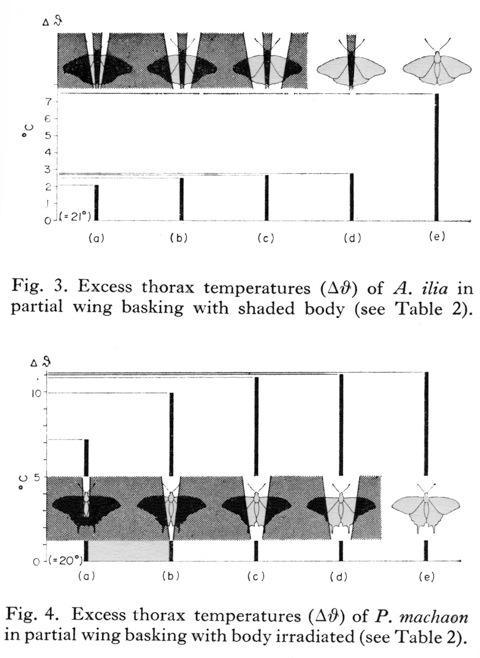Wasserthal, L.T. (1975b): The role of butterfly wings in regulation of body temperature. - J. Insect Physiol. 21: 1921-1930.
Free and unnarcotized butterflies in a vertical basking position were exposed to radiation from a halogen lamp. Warming rate and equilibrium excess temperatures were recorded by means of microthermistors on the cuticle. Living, dead, and dried specimens were irradiated partly and totally. If the wings are shaded, the excess body temperature is reduced by about 30 per cent. The major portion of the heat transferred from the wing to the body originates from 15 per cent of the wing surface nearest to the body. There is no significant difference in excess thoracic temperatures of living and freshly dead specimens. After drying, the body temperature level rises about 1·4 to 2·2°C, remaining almost constant between 15°C (not radiated) and 37°C (radiated). The influence of air convection was tested with dried specimens under varying spatial orientation, keeping incident radiation constant. In an approximately horizontal position the heat arising from the wing increases to about 40 per cent by accumulation of warm air under the wing base. The ecological implications of heat supply by the wings and adaptive significance of wing pattern are discussed with respect to different modes of heat transport.

Basking experiments with partly shaded parts of the wings and the body show that only the wing bases contribute significantly to body excess temperature.

